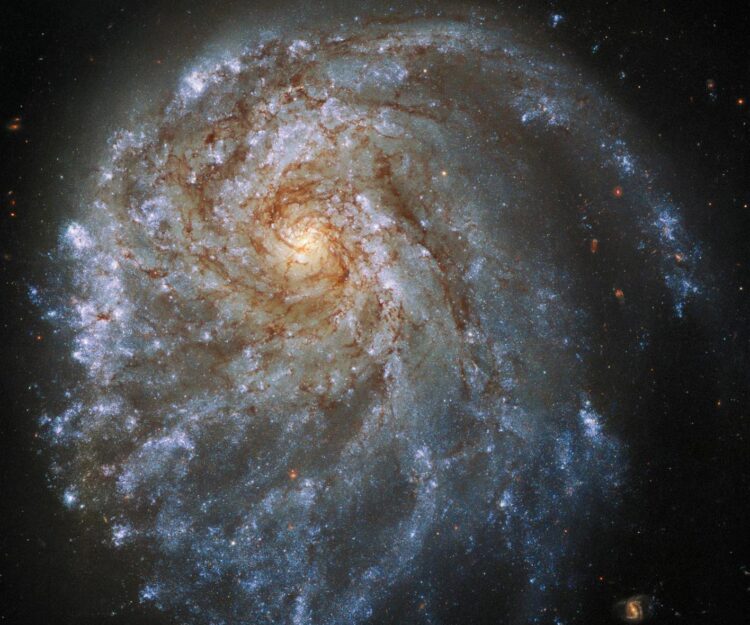Hubble inspects a contorted spiral galaxy

This spectacular image from the NASA/ESA Hubble Space Telescope shows the trailing arms of NGC 2276, a spiral galaxy 120 million light-years away in the constellation of Cepheus. At first glance, the delicate tracery of bright spiral arms and dark dust lanes resembles countless other spiral galaxies. A closer look reveals a strangely lopsided galaxy shaped by gravitational interaction and intense star formation.
Credit: ESA/Hubble & NASA, P. Sell Acknowledgement: L. Shatz
This striking image showcases the unusually contorted appearance of NGC 2276, an appearance caused by two different astrophysical interactions — one with the superheated gas pervading galaxy clusters, and one with a nearby galactic neighbour.
The interaction of NGC 2276 with the intracluster medium — the superheated gas lying between the galaxies in galaxy clusters — has ignited a burst of star formation along one edge of the galaxy. This wave of star formation is visible as the bright, blue-tinged glow of newly formed massive stars towards the left side of this image, and gives the galaxy a strangely lopsided appearance. NGC 2276’s recent burst of star formation is also related to the appearance of more exotic inhabitants — black holes and neutron stars in binary systems.
On the other side of the galaxy from this burst of new stars, the gravitational attraction of a smaller companion is pulling the outer edges of NGC 2276 out of shape. This interaction with the small lens-shaped galaxy NGC 2300 has distorted the outermost spiral arms of NGC 2276, giving the false impression that the larger galaxy is orientated face-on to Earth [1]. NGC 2276 and its disruptive companion NGC 2300 can both be seen in the accompanying image, which shows a wider view of the interacting galaxies.
NGC 2276 is by no means the only galaxy with a strange appearance. The Atlas of Peculiar Galaxies — a catalogue of unusual galaxies published in 1966 — contains a menagerie of weird and wonderful galaxies, including spectacular galaxy mergers, ring-shaped galaxies, and other galactic oddities. As befits an unusually contorted galaxy, NGC 2276 has the distinction of being listed in the Atlas of Peculiar Galaxies twice — once for its lopsided spiral arms and once for its interaction with its smaller neighbour NGC 2300.
Media Contact
All latest news from the category: Physics and Astronomy
This area deals with the fundamental laws and building blocks of nature and how they interact, the properties and the behavior of matter, and research into space and time and their structures.
innovations-report provides in-depth reports and articles on subjects such as astrophysics, laser technologies, nuclear, quantum, particle and solid-state physics, nanotechnologies, planetary research and findings (Mars, Venus) and developments related to the Hubble Telescope.
Newest articles

Sea slugs inspire highly stretchable biomedical sensor
USC Viterbi School of Engineering researcher Hangbo Zhao presents findings on highly stretchable and customizable microneedles for application in fields including neuroscience, tissue engineering, and wearable bioelectronics. The revolution in…

Twisting and binding matter waves with photons in a cavity
Precisely measuring the energy states of individual atoms has been a historical challenge for physicists due to atomic recoil. When an atom interacts with a photon, the atom “recoils” in…

Nanotubes, nanoparticles, and antibodies detect tiny amounts of fentanyl
New sensor is six orders of magnitude more sensitive than the next best thing. A research team at Pitt led by Alexander Star, a chemistry professor in the Kenneth P. Dietrich…





















